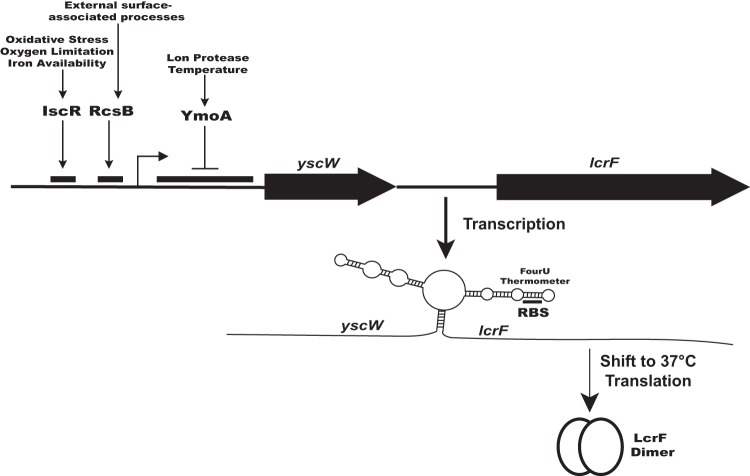FIG 3.
Multiple environmental signals control lcrF expression and, subsequently, T3SS expression through several distinct transcriptional and translational regulatory mechanisms. The data summarized in this review suggest that the YmoA, RcsB, and IscR regulators control transcription of lcrF in response to temperature, extracytoplasmic stress, iron bioavailability, oxygen tension, and reactive oxygen species. In addition, the RNA thermometer found upstream of lcrF allows LcrF translation only at the mammalian host body temperature, 37°C. As Yersinia transits from the environment or the flea vector to the mammalian host and then from localized to disseminated sites of infection, changes in temperature, iron availability, and stresses such as ROS may direct the regulatory network controlling LcrF, optimizing T3SS deployment and virulence.

